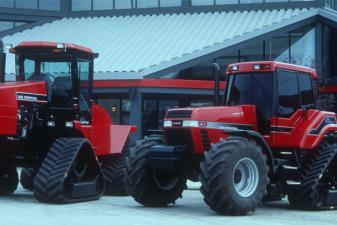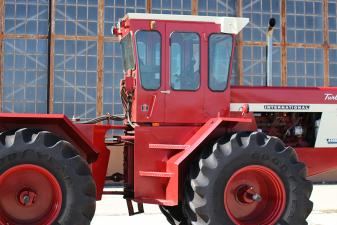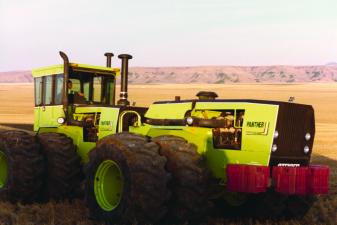South Pole Traverse

This excerpt from Red 4WD Tractors follows the South Pole Traverse—a seven-machine convoy over the Transantarctic Mountains that included four Steiger Quadtracs, not too far from stock. The journey was four years in the making and charted over two thousand miles of inhospitable arctic terrain. Read more accounts of adventure, peril, and innovation in the award-winning books Red Tractors and Red 4WD Tractors by Lee Klancher et al.
Tractors have been used at McMurdo Station since the 1950s. Only once had a team of machines successfully navigated the treacherous route to the South Pole. In January 2008, a convoy of seven machines attempted the crossing, led by a Kasbohrer PistenBully scout vehicle equipped with a boom-mounted ground penetrating radar for detecting crevasses. The big tracked vehicles dragged huge sleds laden with 20 tons of cargo and 47 tons of fuel at about seven miles per hour. Four of those tracked machines were Steiger Quadtracs.
Up until 2008, the only way to get supplies from McMurdo Station to the South Pole was to airlift them with a cargo plane. The 2,064-mile round-trip journey crossed the Transantarctic Mountains and climbed up the Ross Ice Shelf, with more than 10,000 feet of elevation change.
The journey was a perilous one; dangerous crevasses can (and do) swallow tractors and equipment whole. In 1990, a 70-ton Caterpillar D8 broke through an eight-foot cap of snow and into a crevasse. The sled behind the tractor wedged in the ice, preventing the Cat from plunging 300 feet to the bottom of an icy pit. The Cat and the operator dangled on the edge of the crevasse for hours until a rescue team was flown in from New Zealand to extract them both.
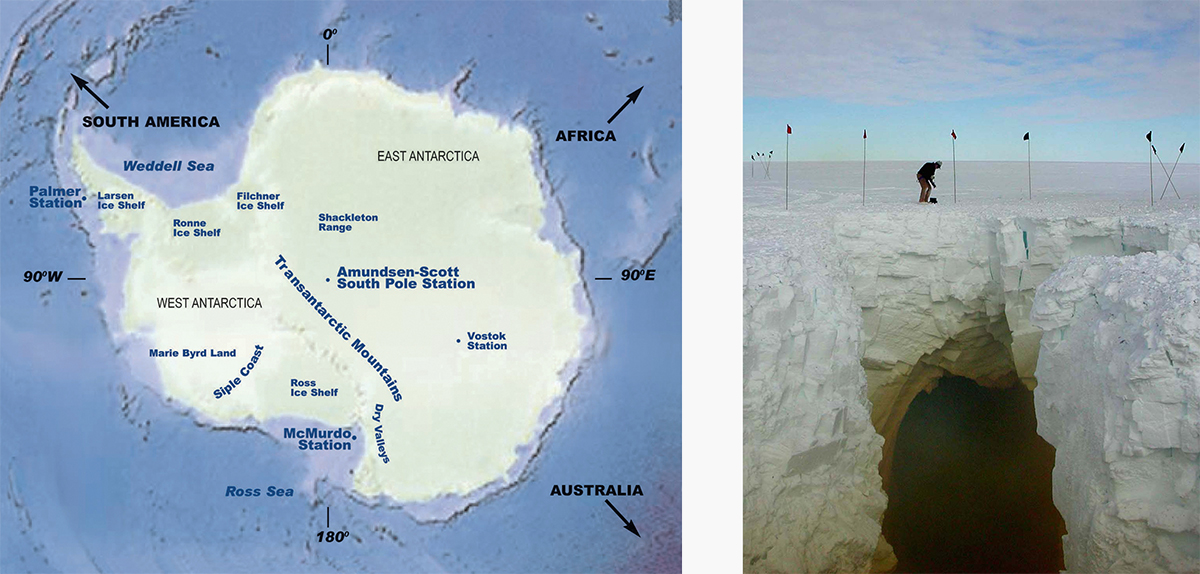
Left: The Route. National Science Foundation / Right: Mongo John Crevasse. John Wright works on the snow bridge above a crevasse named Mongo, which the South Pole traverse team discovered and later filled with snow. An over-ice traverse route is being explored as an alternative to flying supplies to the South Pole. Every crevasse discovered in the route must be exposed and filled so tracked vehicles can safely pass over them. This crevasse measured 32 feet wide and 82 feet deep with a snow bridge 25 feet deep. National Science Foundation / Russ Alger

In 2005, several Steiger Quadtracs were used to open an over-ice route between two remote stations at the South Pole. The tractors were transported from Christchurch, New Zealand, to McMurdo Station, Antarctica, on a U.S. Air Force C-17. National Science Foundation / Peter Somers
Scouting the route and preparing for the journey took four years. The team would create a road a few hundred miles further from McMurdo Station each year. Crevasses had to be blown out with dynamite and filled back in with snow to allow safe passage. In the first year, the team only traversed 120 miles, and had to dynamite 32 crevasses. They covered 425 miles in year two. The third year, they were within 300 miles of the South Pole but ran out of fuel. They turned back.
The team made it all the way through the next year, but the last 97 miles required them to bulldoze down dozens of 8-foot high rough ice ridges known as sastrugi. Getting to the South Pole took 27 days. Descending back to McMurdo with light sleds, the team made the passage in 17 days.

The South Pole Traverse team's three Steiger Quadtracs. National Science Foundation
Victory. The 2007-2008 South Pole Traverse team posed for a photo upon reaching Amundsen-Scott South Pole Station. From left to right: Paul Thur, Dale Hill, Mike Sarzynski, Bill McCormick, Andy Peterson, Kristin Carney, Brad Johnson, and Russ Magsig. The brass marker next to the U.S. flag marks 90 degrees south. The over-ice traverse takes several weeks to travel between McMurdo and South Pole Stations, but its ability to haul thousands of pounds of cargo allows LC-130 planes to fly to other remote areas of the continent in support of scientific research. National Science Foundation
The Quadtracs used on the expedition were surprisingly close to stock. Today, less aggressive grousers are used, which grip the snow a bit better due to increased flex. The air intakes are designed to keep snow out, as is true with the hoods. Fluids are replaced with those of the cold-weather viscosity type.
George Blaisdell was involved in evaluating agricultural tractors for cold weather use in northern Minnesota. “I played probably the largest role in getting these tractors to Antarctica,” he said in a November 2012 article in Grainews.
When Blaisdell took the position as operations manager for Antarctic infrastructure and logistics, his experience with tracked vehicles in Minnesota led him to recommend tractors for Antarctica. He was unsuccessful at first, but after the French had good luck with them in the region, the Americans followed suit. “It turns out that goal of low compaction—that combination of a light footprint and high traction—is ideal for the snow too,” Blaisdell said.
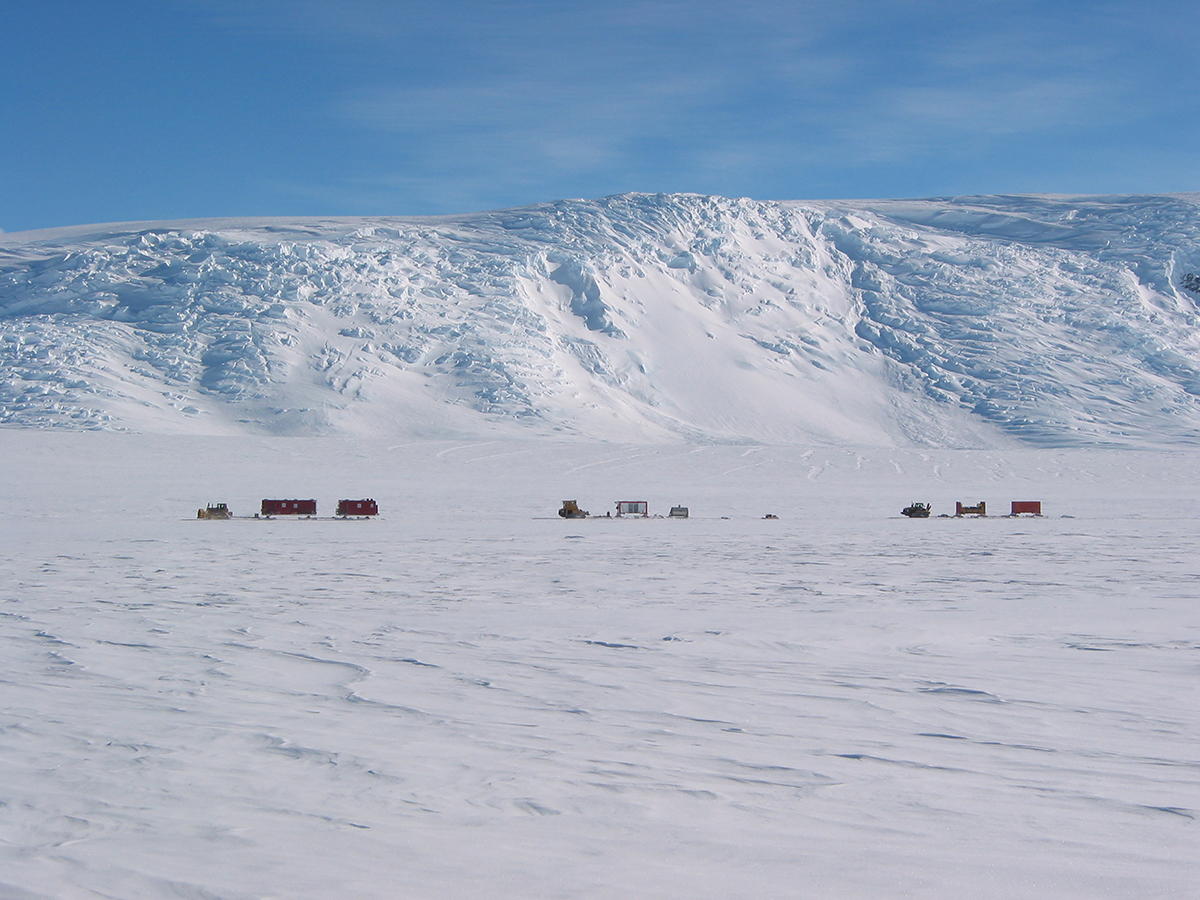
Proof of Concept Stage. The first task for the Steigers was to determine if it was feasible to open the route to the South Pole. On January 4, 2005, the team took to the ice, pulling sleds loaded with fuel, housing, and all the supplies needed for the test. National Science Foundation / John Penney
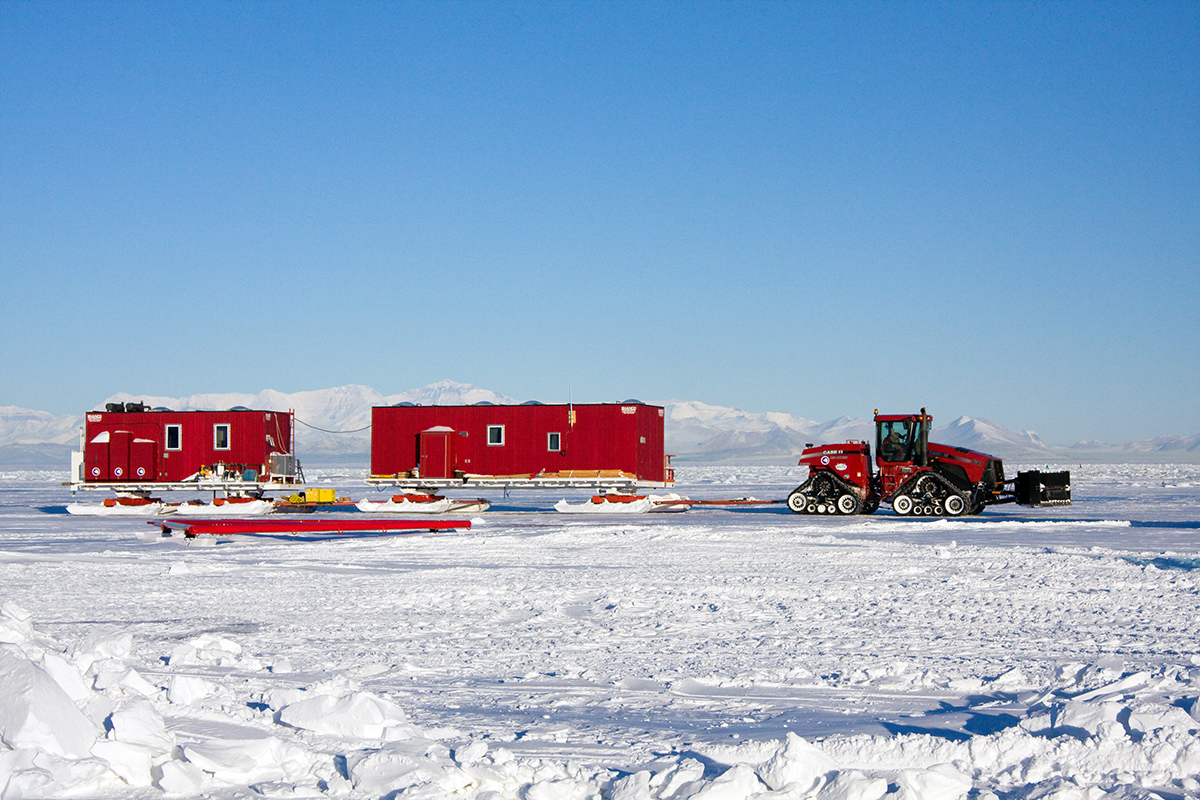
The Traverse. The South Pole Traverse had an eight-member team cross 1,000 miles over 43 days to travel from McMurdo Station to the Amundsen-Scott South Pole Station. The tractors hauled 250,000 pounds of cargo to the South Pole to open the route and continued to haul tons of cargo to the South Pole once the road was opened. National Science Foundation / Shawn Kennedy
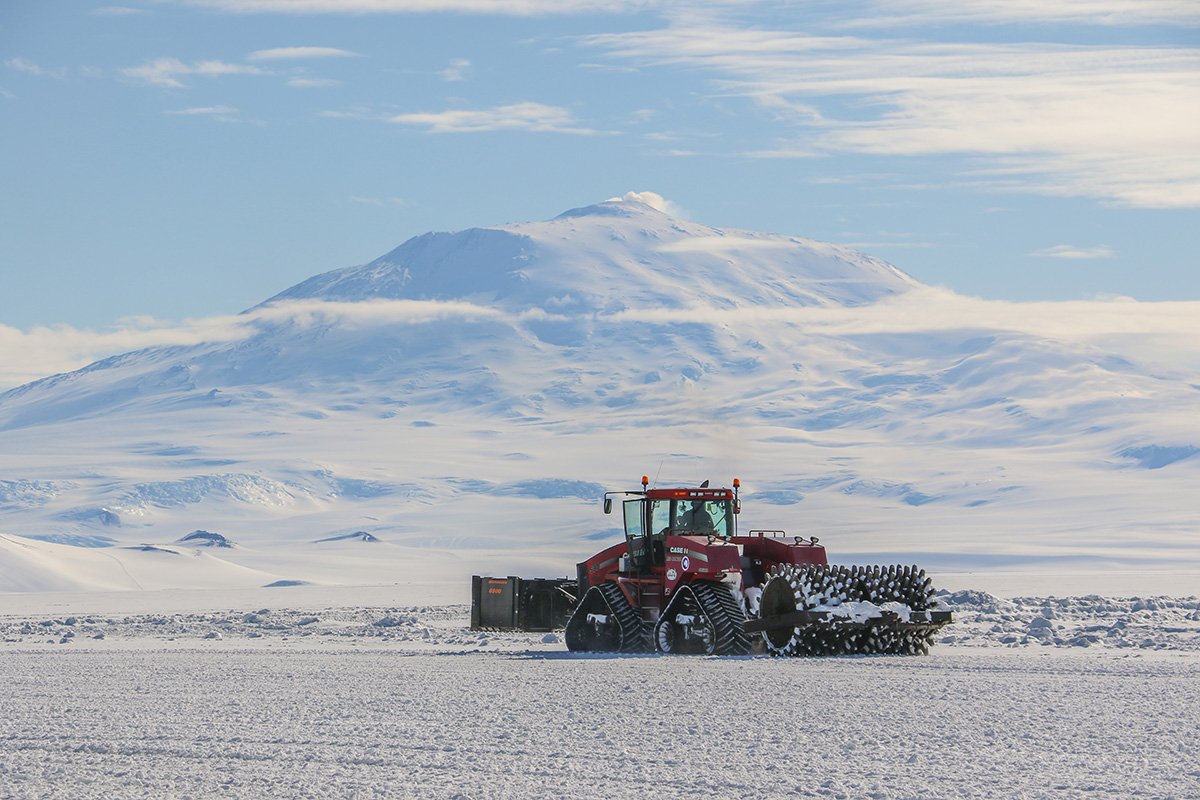
Phoenix Airfield, Antarctica. This 530 Quadtrac is pulling a glycol-filled sheep's foot to compact the surfae of the Phoenix Airfield on November 24, 2015. The world's southernmost active volcano, Mount Erebus, is in the background. National Science Foundation / Jack Green
Read more in Red Tractors and Red 4WD Tractors by Lee Klancher et al.



